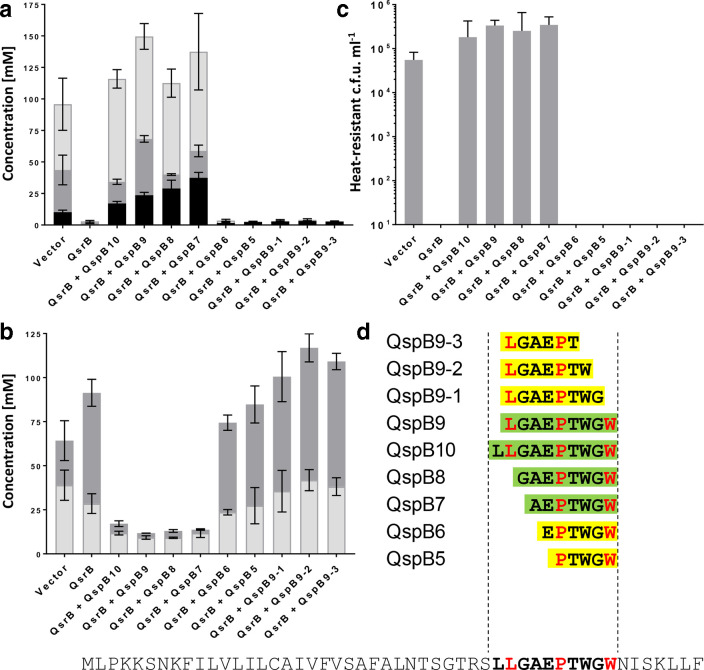Fig. 6.
Synthetic peptides alleviate qsrB-mediated repression of solvent formation and sporulation. (a) Solvent titres: butanol (light grey), acetone (dark grey), ethanol (black). (b) Acid titres: butyrate (dark grey), acetate (light grey). (c) Spore titres (heat-resistant c.f.u.). (d) Synthetic peptides were dissolved in DMSO and individually added to CBMS cultures of C. acetobutylicum pMTL85143-qsrB after 4 h of growth to a final concentration of 10 µM. DMSO-only controls were performed for C. acetobutylicum pMTL85143 and C. acetobutylicum pMTL85143-qsrB, respectively. Cultures were grown for 5 days prior to analysis. C. acetobutylicum pMTL85143 vector control (Vector); C. acetobutylicum pMTL85143-qsrB cultures (QsrB). The presence of specific synthetic peptides as shown in (d) is indicated (+QspB). The complete QspB sequence is given at the bottom with the three conserved amino acid positions in the C-terminal region (leucine, proline, tryptophan) indicated by bold red lettering. Data represent the mean of three independent cultures with error bars indicating the standard deviation.

